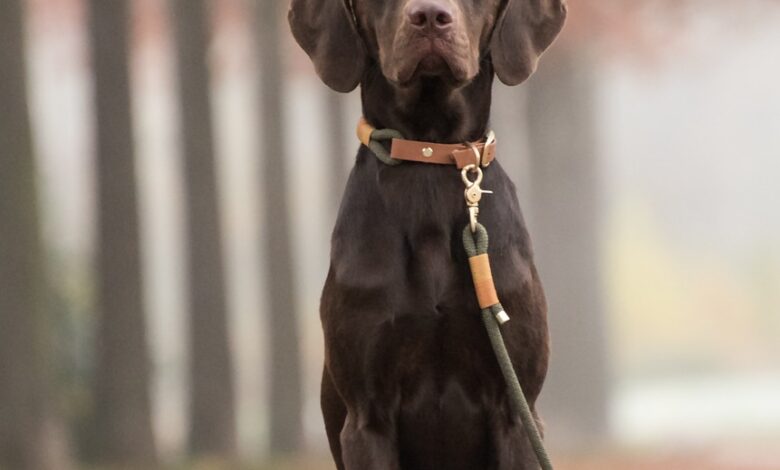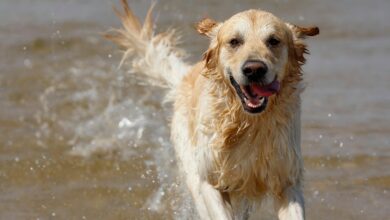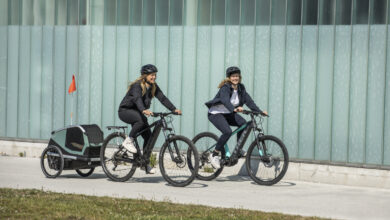
The decision to use a harness or a leash with a collar for gun dogs (Labradors or retrievers specifically trained for working roles such as retrieving or fieldwork) involves additional considerations tailored to their unique needs and training. Gun dogs are often highly disciplined and accustomed to off-lead work, but their training and working environments may influence which option is better suited for them. Here’s a look at how the choice applies to gun dogs, including any differences from family Labradors.
Using a Harness for Gun Dogs
Harnesses can be beneficial for gun dogs in certain situations, but their utility may depend on the context of the activity.
When a Harness is Suitable for Gun Dogs:
Non-Working Scenarios: For everyday walks, travel, or exercise outside of the field, a harness is an excellent option to prevent strain on the neck, particularly for young or excitable gun dogs that may still pull when leashed.
Off-Duty Control: If your gun dog is not in a working environment (e.g., walking through a town or heading to a training session), a harness with a front or back clip provides good control and keeps the dog safe in potentially distracting environments.
High-Energy Moments: Gun dogs can be energetic, especially before being released to work or train. A harness can help handlers manage their dog’s excitement and prevent pulling before they’re off-lead.
Health or Injury Considerations: Older gun dogs or those recovering from injuries may benefit from a harness, as it reduces strain on the neck and spine. A supportive harness can also assist with mobility if needed.
When a Harness May Be Less Practical:
Fieldwork and Retrieval: In active working scenarios, a harness is often impractical because it may restrict movement or snag on undergrowth, especially in dense vegetation or water. Gun dogs rely on freedom of motion for retrieving game, swimming, and running in diverse terrain.
Control and Handling: Gun dogs are trained to work off-lead and respond to commands rather than being guided physically. A harness may interfere with their responsiveness to verbal cues or hand signals, as these are key elements of gun dog training.
Using a Leash with a Collar for Gun Dogs
Leashes with collars are the traditional choice for gun dogs and remain highly effective for their specific training and working needs.
When a Collar is Best for Gun Dogs:
On-Lead Control in Field Settings: A collar and leash setup is common for handling gun dogs in controlled field environments, such as when walking to and from the working area. It allows for quick release and doesn’t interfere with their ability to work once off-lead.
Maintaining Focus and Discipline: Gun dogs are trained to respond to cues, and a collar provides subtle, precise control without the bulk of a harness. This is particularly useful when walking to a hunting spot or keeping the dog steady before a retrieve.
Lightweight and Practical: Collars are lightweight and less restrictive, which is advantageous for dogs that need to move freely. For example, during water retrieves, a collar is less likely to become waterlogged or inhibit movement.
Potential Drawbacks of Collars for Gun Dogs:
Neck Strain for Pullers: For young or excitable gun dogs that haven’t yet mastered walking calmly on a lead, collars can cause neck strain if they pull. This is more of an issue for dogs in the early stages of training.
Reduced Control in Distractions: In non-working environments where distractions are high (e.g., around traffic or crowds), a collar may not provide enough control for an energetic dog.
Key Considerations for Gun Dogs
Training and Behaviour:
Gun dogs are trained to have excellent leash manners and should not pull on a leash, making collars a safe and practical option for most situations. If a gun dog is still in training or has a tendency to pull, a harness with a front clip can be used temporarily to teach proper leash behaviour without risking neck strain.
Working Environment:
The working environment is a major factor in deciding whether to use a harness or a collar. For example:
Water Work: A simple collar is ideal, as a harness could become heavy or snagged when wet.
Dense Cover: Collars are less likely to get caught in bushes or brambles compared to harnesses, allowing the dog to move unhindered.
Wide-Open Fields: For off-lead work in open areas, the choice between a collar or harness is less relevant, as the dog is guided primarily by commands.
Health and Comfort:
Gun dogs in peak physical condition generally have no issue with wearing a collar. However, for older or less active working dogs, a harness may provide added comfort, particularly on long walks or during transport.
Which is Best for Gun Dogs:
Use a Collar and Leash for:
- Fieldwork and training environments.
- Well-trained, steady gun dogs that walk calmly on a lead.
- Situations where lightweight gear and freedom of motion are priorities.
Use a Harness for:
- Everyday walks or non-working scenarios, particularly in high-traffic areas or when distractions are present.
- Training young gun dogs to prevent pulling on a lead.
- Older or injured gun dogs that require additional support.
For gun dogs, a collar and leash are the preferred choice for most working and training situations due to their simplicity, practicality, and compatibility with the dog’s training.
However, a harness can be a valuable tool for specific circumstances, such as training young dogs, managing excitable behaviour, or ensuring comfort during non-working outings.
Ultimately, the decision should be based on the individual dog, their level of training, and the environment they’ll be in. Both options can be used effectively with the right preparation and understanding of your Labrador’s needs.





